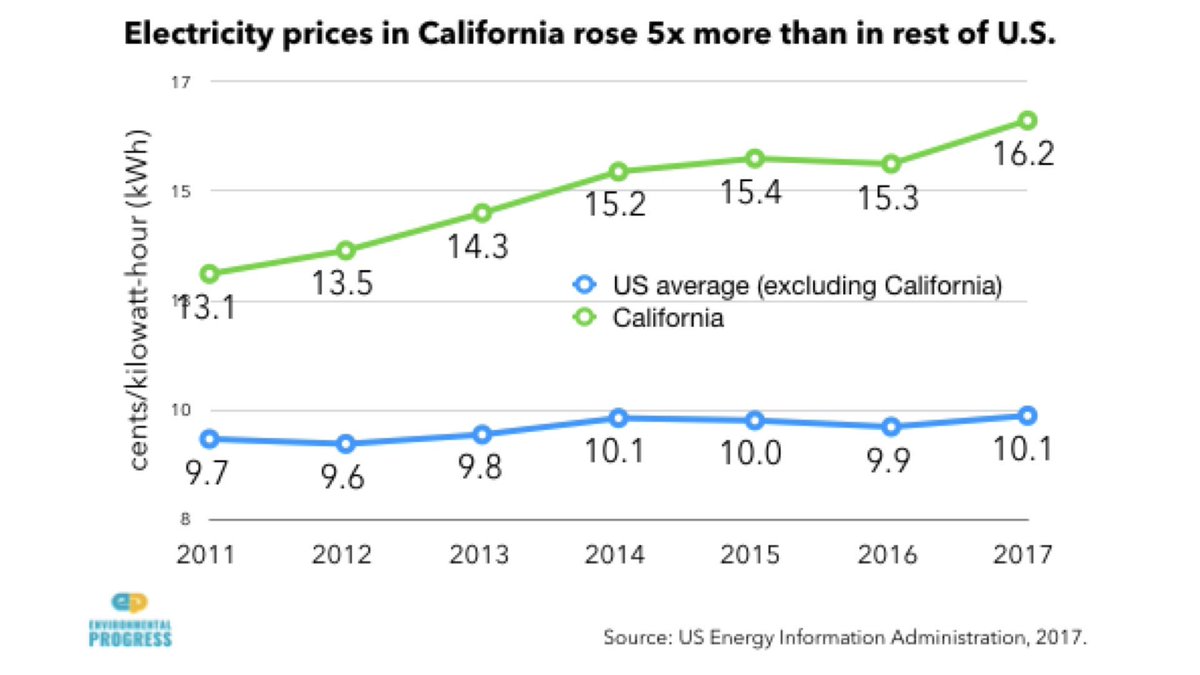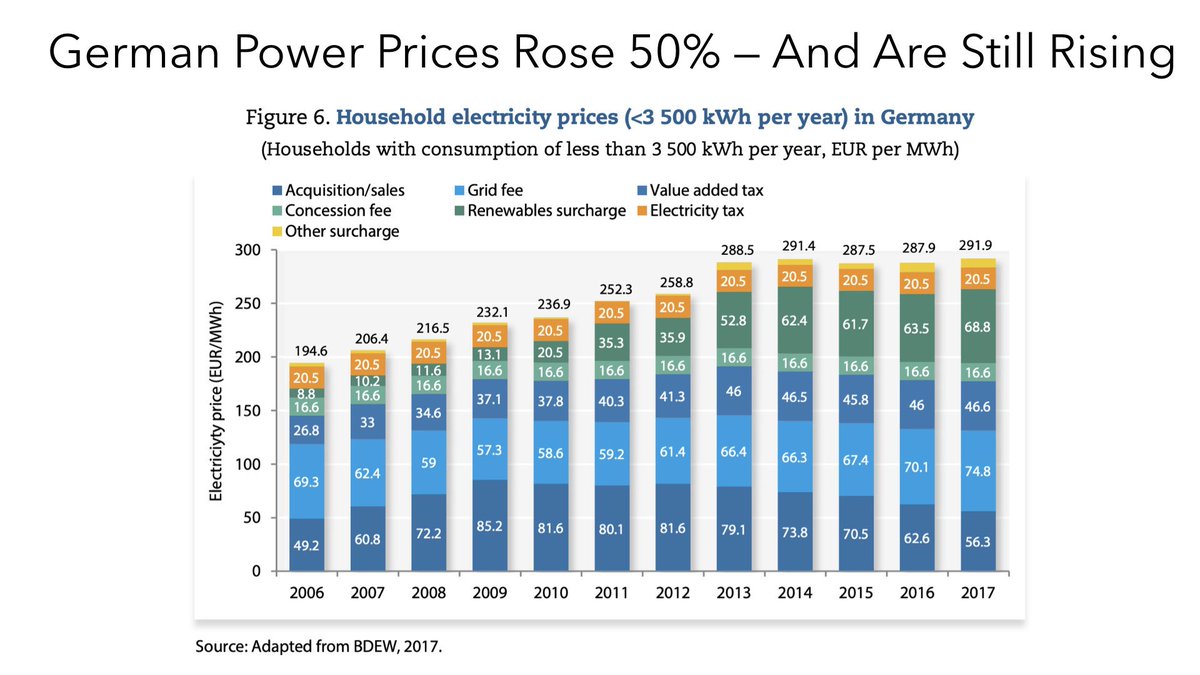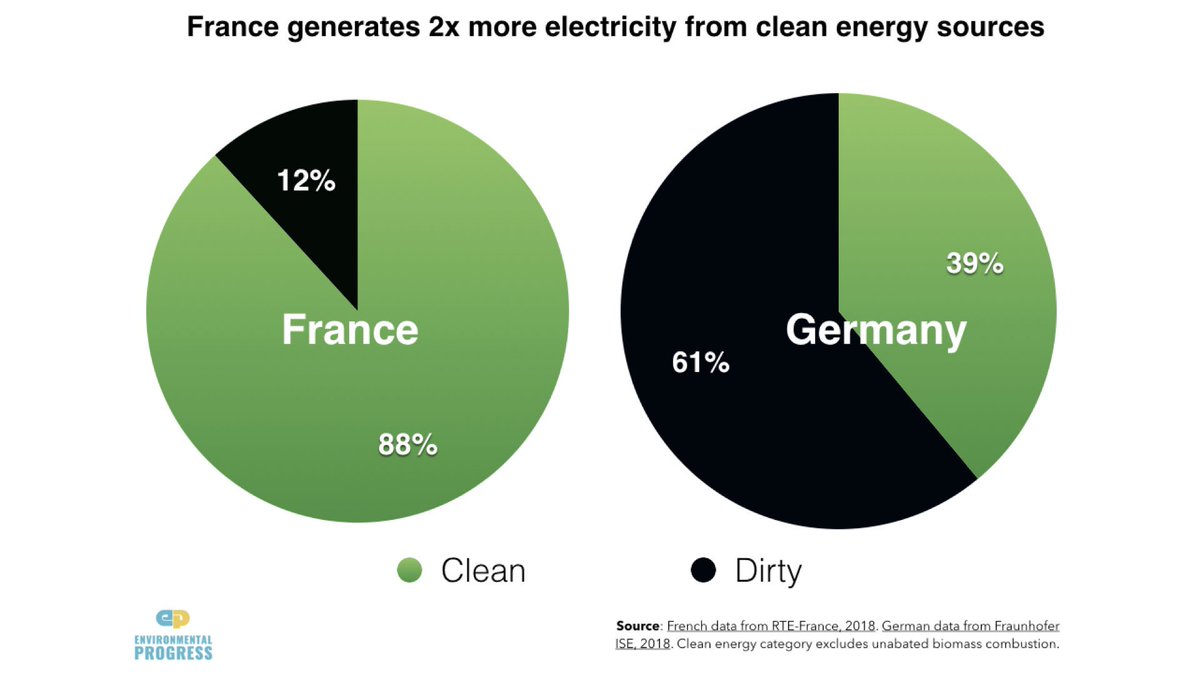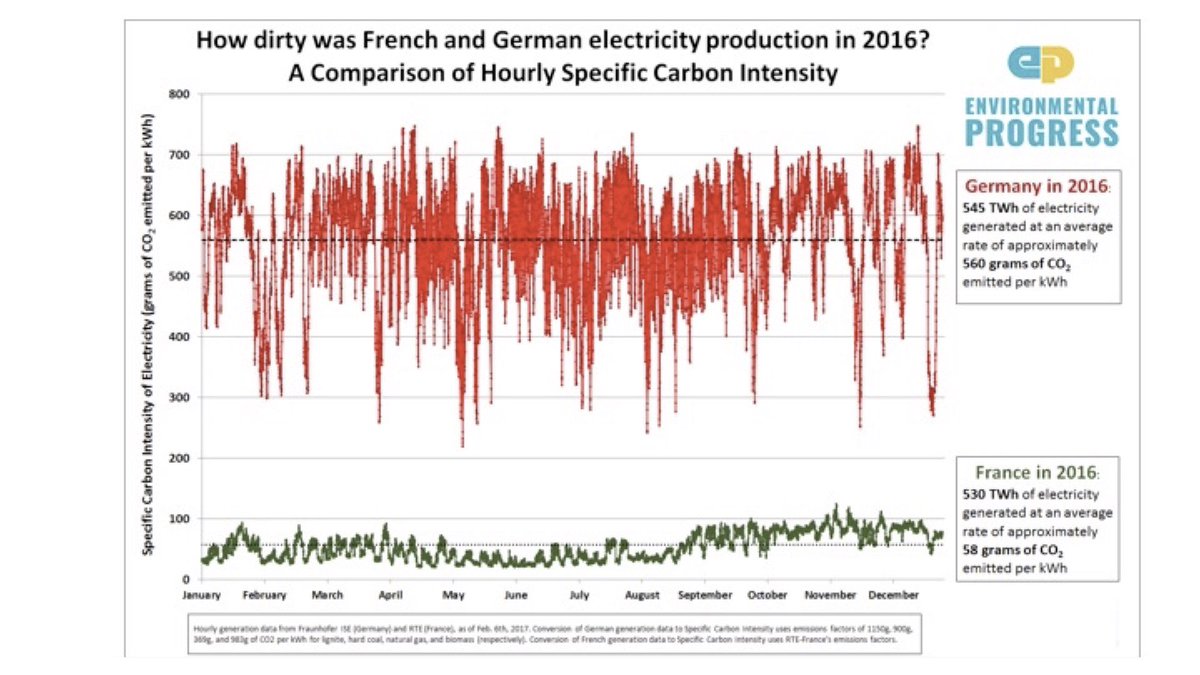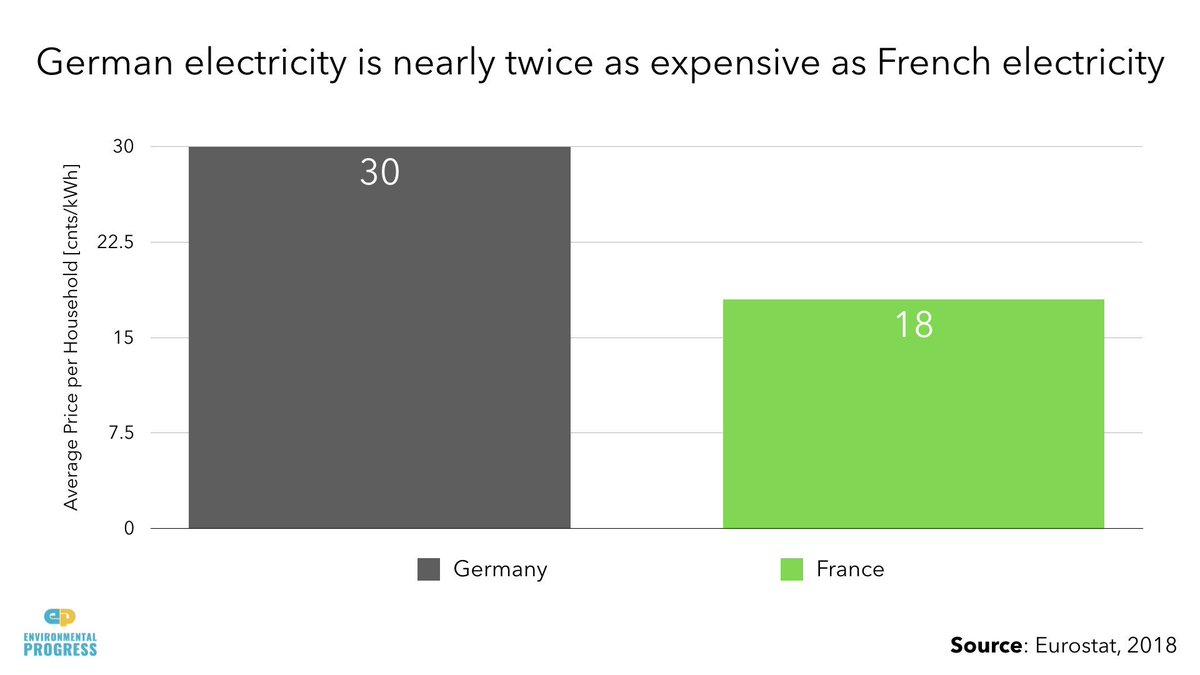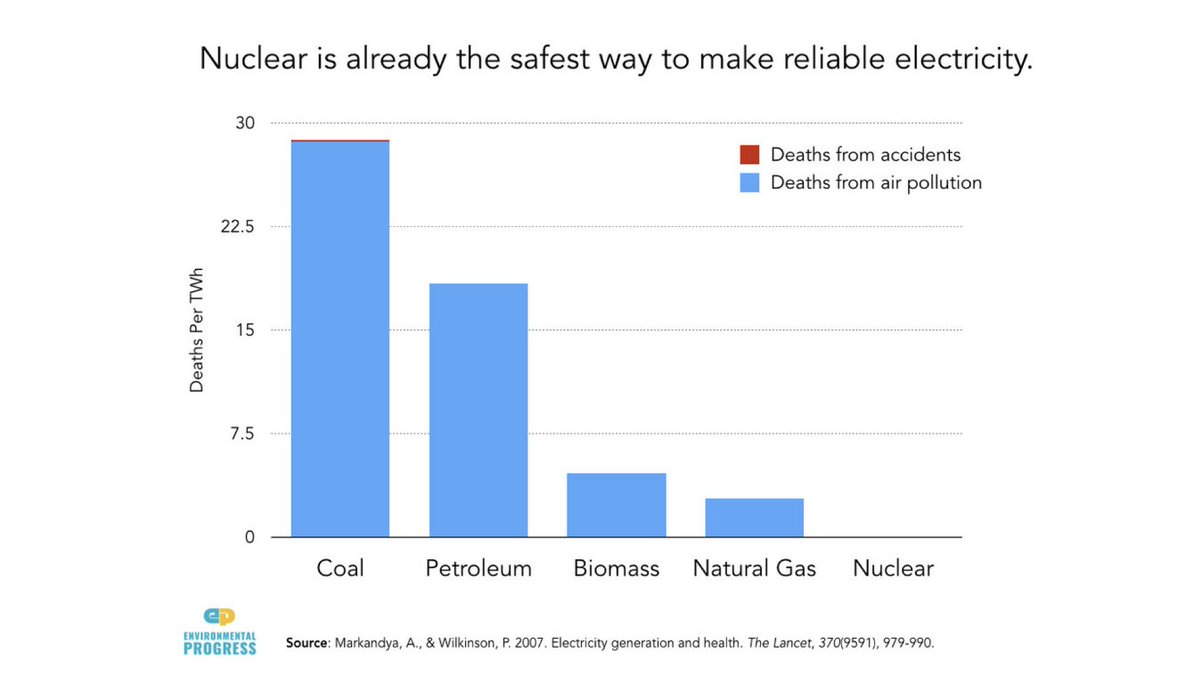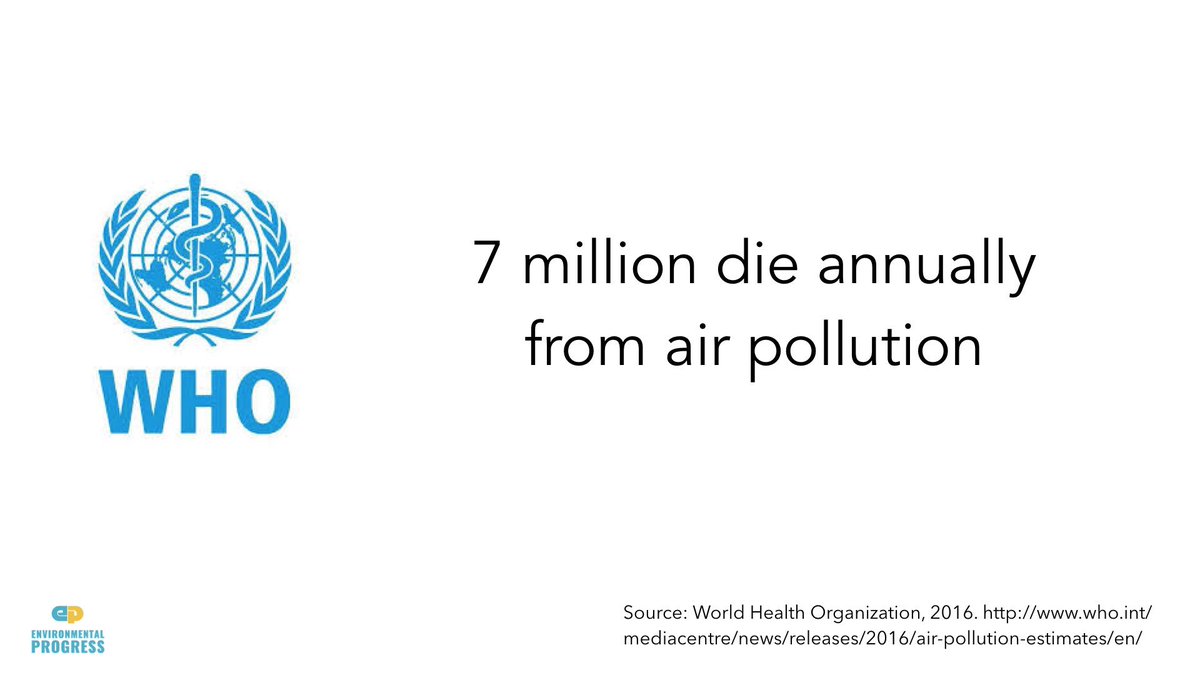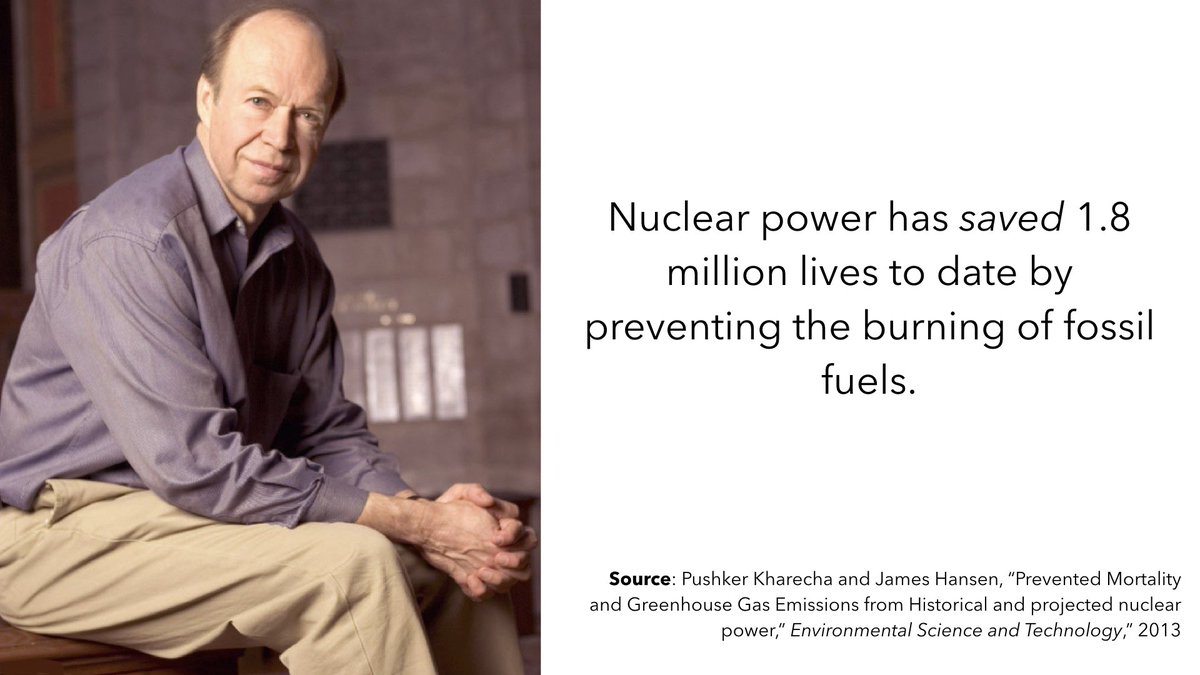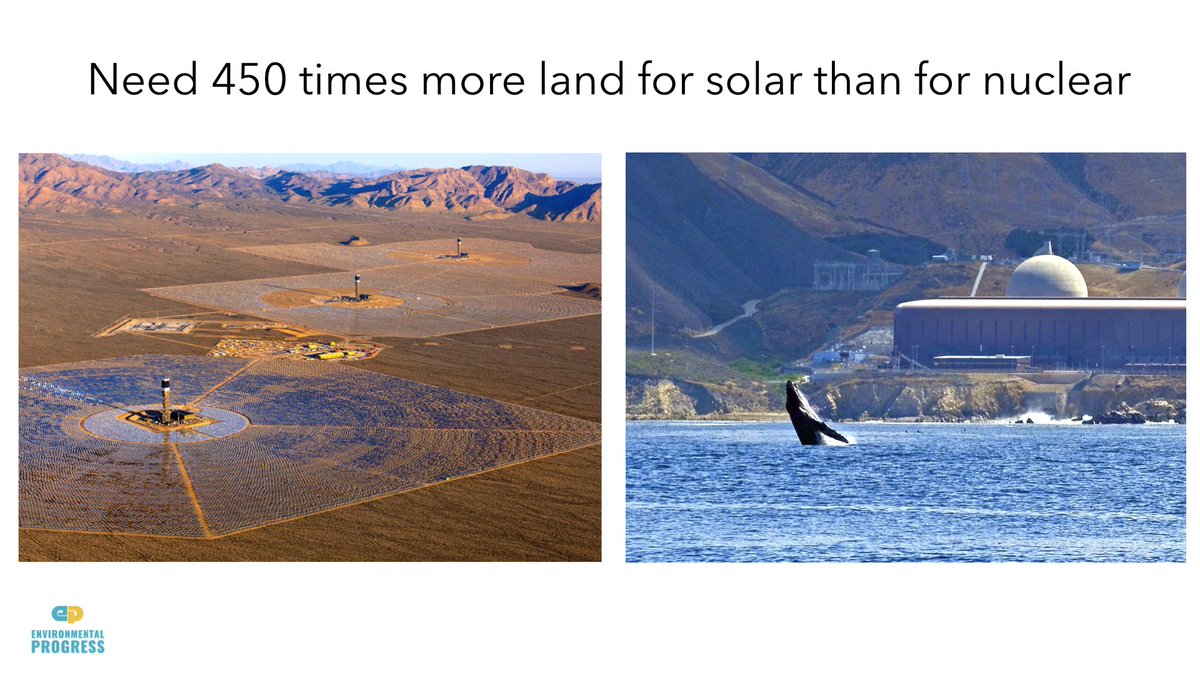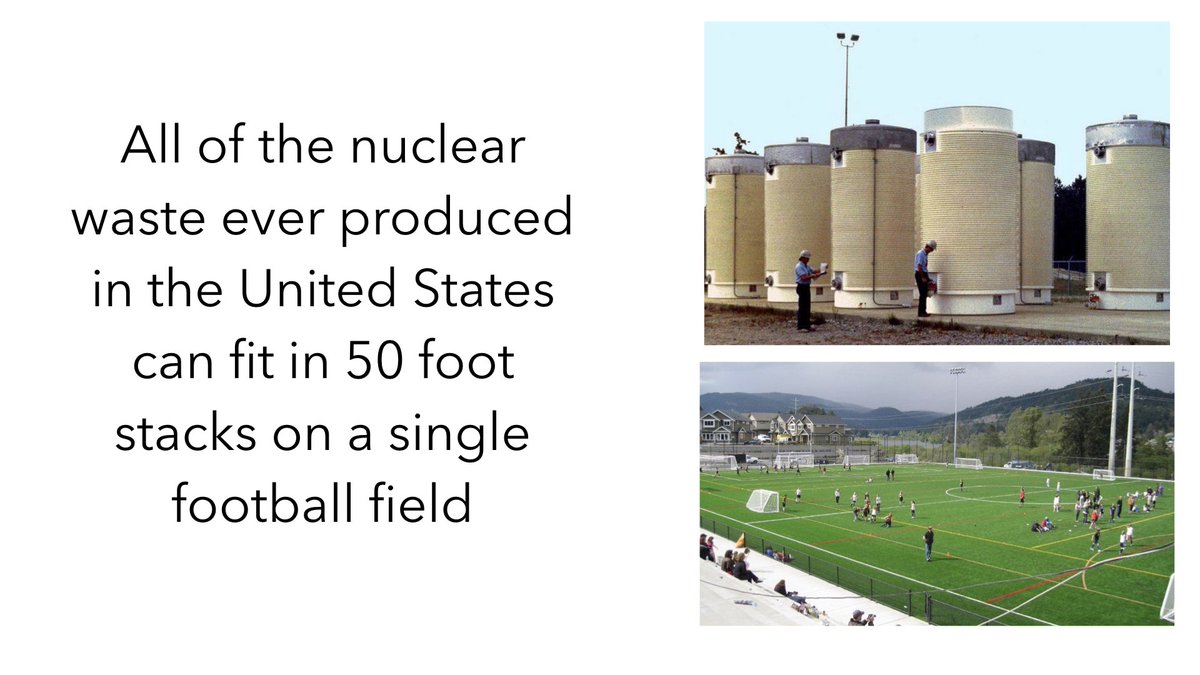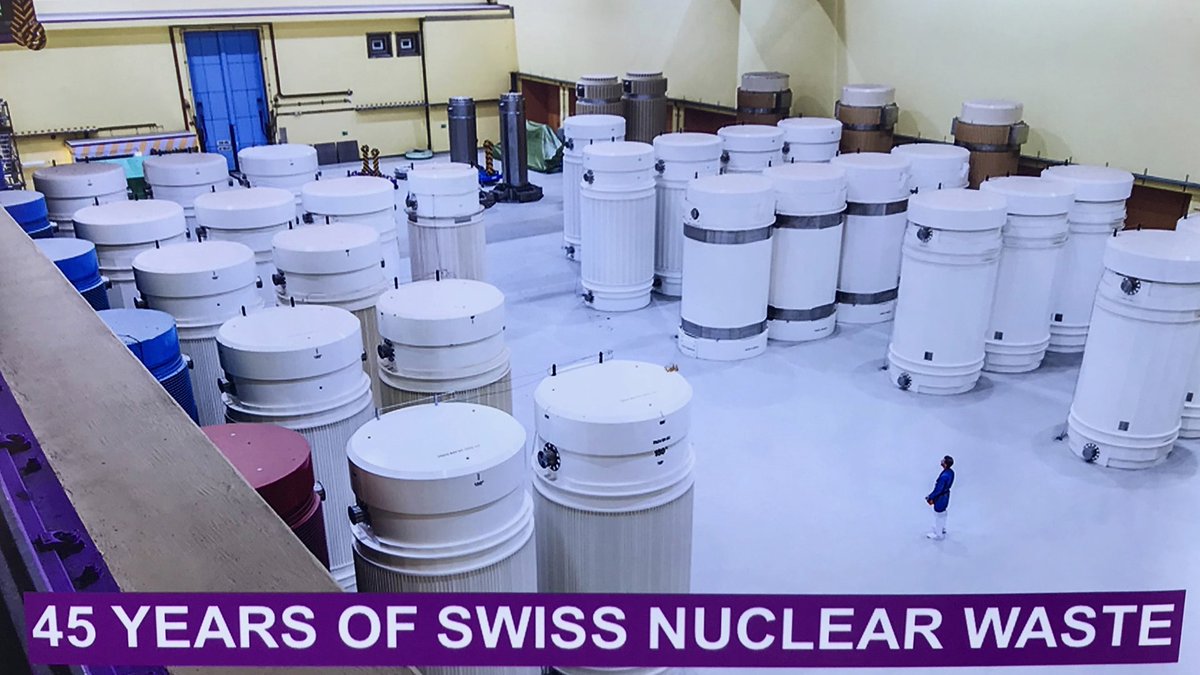I used to believe innovation could reduce the massive ecological impacts of solar & wind farms
Then I realized that we can't make the sun/wind more energy-dense, or reliable
Thus, I can no longer support them
My newest essay is 20+ years in the making https://goo.gl/wgZ5UK
Then I realized that we can't make the sun/wind more energy-dense, or reliable
Thus, I can no longer support them
My newest essay is 20+ years in the making https://goo.gl/wgZ5UK
1. When I was a boy, my parents would sometimes take my sister and me camping in the desert.
A lot of people think deserts are empty, but my parents taught us to see the wildlife all around us, including hawks, eagles, and tortoises.
A lot of people think deserts are empty, but my parents taught us to see the wildlife all around us, including hawks, eagles, and tortoises.
2. After college, I moved to California to work on environmental campaigns. I helped save the state’s last, unprotected ancient redwood forest, and blocked a proposed radioactive waste repository set for the desert.
3. In 2002, shortly after I turned 30, I decided I wanted to dedicate myself to addressing climate change.
I was worried that global warming would end up destroying many of the natural environments that people had worked so hard to protect.
I was worried that global warming would end up destroying many of the natural environments that people had worked so hard to protect.
4. I thought the solutions were pretty straightforward: solar panels on every roof, electric cars in every driveway, etc. The main obstacles, I believed, were political. And so I helped organize a coalition of America’s largest labor unions and environmental groups.
5. Our proposal was for a $300 billion dollar investment in renewables. We would not only prevent climate change but also create millions of new jobs in a fast-growing high-tech sector.
It was the real world predecessor to @AOC "Green New Deal."
It was the real world predecessor to @AOC "Green New Deal."
6. Our efforts paid off in 2007 when then-presidential candidate Barack Obama embraced our vision.
Between 2009–15, the U.S. invested $150 billion dollars in renewables and other forms of clean tech.
But right away we ran into trouble.
Between 2009–15, the U.S. invested $150 billion dollars in renewables and other forms of clean tech.
But right away we ran into trouble.
7. The first was around land use. Electricity from solar roofs costs about twice as much as electricity from solar farms, but solar and wind farms require huge amounts of land.
8. That, along with the fact that solar and wind farms require long new transmissions lines, threatened local communities, and conservationists trying to preserve wildlife, particularly birds.
9. Another challenge was the intermittent nature of solar and wind energies. When the sun stops shining and the wind stops blowing, you have to quickly be able to ramp up another source of energy.
10. Happily, there were a lot of people working on solutions. One solution was to convert California’s dams into big batteries.
11. The idea was that, when the sun was shining and the wind was blowing, you could pump water uphill, store it for later, and then run it over the turbines to make electricity when you needed it.
12. Other problems didn’t seem like such a big deal, on closer examination. For example, after I learned that house cats kill billions of birds every year it put into perspective the nearly one million birds killed by wind turbines.
13. It seemed to me that most, if not all, of the problems from scaling up solar and wind energies could be solved through more technological innovation.
But, as the years went by, the problems persisted and in some cases grew worse.
But, as the years went by, the problems persisted and in some cases grew worse.
14. For example, California is a world leader when it comes to renewables but we haven’t converted our dams into batteries, partly for geographic reasons. You need the right kind of dam and reservoirs, and even then it’s an expensive retrofit.
15. A bigger problem is that there are many other uses for the water that accumulates behind dams, namely irrigation and cities. And because the water in our rivers and reservoirs is scarce & unreliable, the water from dams for those other purposes is becoming ever-more precious
16. Without large-scale ways to back-up solar energy California has had to block electricity coming from solar farms when it’s extremely sunny, or pay neighboring states to take it from us so we can avoid blowing-out our grid.
17. Despite what you’ve heard, there is no “battery revolution” on the way, for well-understood technical and economic reasons.
18. As for house cats, they don’t kill big, rare, threatened birds. What house cats kill are small, common birds, like sparrows, robins and jays
What kills big, threatened, and endangered birds—birds that could go extinct—like hawks, eagles, owls, and condors, are wind turbines
What kills big, threatened, and endangered birds—birds that could go extinct—like hawks, eagles, owls, and condors, are wind turbines
19. In fact, wind turbines are the most serious new threat to important bird species to emerge in decades. The rapidly spinning turbines act like an apex predator which big birds never evolved to deal with.
20. Solar farms have similarly large ecological impacts. Building a solar farm is a lot like building any other kind of farm. You have to clear the whole area of wildlife.
21. In order to build one of the biggest solar farms in California the developers hired biologists to pull threatened desert tortoises from their burrows, put them on the back of pickup trucks, transport them, and cage them in pens where many ended up dying.
22. As we were learning of these impacts, it gradually dawned on me that there was no amount of technological innovation that could solve the fundamental problem with renewables.
23. You can make solar panels cheaper and wind turbines bigger, but you can’t make the sun shine more regularly or the wind blow more reliably.
I came to understand the environmental implications of the physics of energy.
I came to understand the environmental implications of the physics of energy.
24. In order to produce significant amounts of electricity from weak energy flows, you just have spread them over enormous areas. In other words, the trouble with renewables isn’t fundamentally technical—it’s natural.
25. Dealing with energy sources that are inherently unreliable, and require large amounts of land, comes at a high economic cost.
26. There’s been a lot of publicity about how solar panels and wind turbines have come down in cost.
But those one-time cost savings from making them in big Chinese factories have been outweighed by the high cost of dealing with their unreliability.
But those one-time cost savings from making them in big Chinese factories have been outweighed by the high cost of dealing with their unreliability.
27. Consider California. Between 2011–17 the cost of solar panels declined about 75 percent, and yet our electricity prices rose five times more than they did in the rest of the U.S.
28. It’s the same story in Germany, the world leader in solar and wind energy. Its electricity prices increased 50 percent between 2006–17, as it scaled up renewables.
29. I used to think that dealing with climate change was going to be expensive. But I could no longer believe this after looking at Germany and France. https://www.forbes.com/sites/michaelshellenberger/2019/02/05/if-saving-the-climate-requires-making-energy-so-expensive-why-is-french-electricity-so-cheap/
30. Germany’s carbon emissions have been flat since 2009, despite an investment of $580 billion by 2025 in a renewables-heavy electrical grid, and a 50 percent rise in its electricity prices.
31. Meanwhile, France produces one-tenth the carbon emissions per unit of electricity as Germany and pays little more than half for its electricity. How? Through nuclear power.
32. Then, under pressure from Germany, France spent $33 billion on renewables, over the last decade. What was the result? A rise in the carbon intensity of its electricity supply, and higher electricity prices, too. https://www.forbes.com/sites/michaelshellenberger/2019/02/05/if-saving-the-climate-requires-making-energy-so-expensive-why-is-french-electricity-so-cheap/
33. What about all the headlines about expensive nuclear & cheap solar-wind?
They are largely an illusion resulting from the fact that ~70% of costs of nuclear are up-front solar-wind costs don’t include transmission lines, storage & grid management https://www.forbes.com/sites/michaelshellenberger/2019/02/05/if-saving-the-climate-requires-making-energy-so-expensive-why-is-french-electricity-so-cheap/#503b82e51bd9
They are largely an illusion resulting from the fact that ~70% of costs of nuclear are up-front solar-wind costs don’t include transmission lines, storage & grid management https://www.forbes.com/sites/michaelshellenberger/2019/02/05/if-saving-the-climate-requires-making-energy-so-expensive-why-is-french-electricity-so-cheap/#503b82e51bd9
34. It’s reasonable to ask whether nuclear power is safe, and what happens with its waste.
It turns out that scientists have studied the health and safety of different energy sources since the 1960s.
It turns out that scientists have studied the health and safety of different energy sources since the 1960s.
35. Every major study, including this recent one by the British medical journal Lancet, finds the same thing: nuclear is the safest way to make reliable electricity.
36. Strange as it sounds, nuclear power plants are so safe for the same reason nuclear weapons are so dangerous
The uranium used as fuel in power plants, and material for bombs, can create one million times more heat per its mass than its fossil fuel and gunpowder equivalents
The uranium used as fuel in power plants, and material for bombs, can create one million times more heat per its mass than its fossil fuel and gunpowder equivalents
37. It’s not so much about the fuel as the process. We release more energy breaking atoms than breaking chemical bonds. What’s special about uranium atoms is that they are easy to split.
38. Because nuclear plants produce heat without fire, they emit no air pollution in the form of smoke. By contrast, the smoke from burning fossil fuels and biomass results in the premature deaths of seven million people per year, according to the World Health Organization.
39. Even during the worst accidents, nuclear plants release small amounts of radioactive particulate matter from the tiny quantities of uranium atoms split apart to make heat.
40. Over an 80-year lifespan, fewer than 200 people will die from the radiation from the worst nuclear accident, Chernobyl, and zero will die from the small amounts of radiant particulate matter that escaped from Fukushima. https://www.forbes.com/sites/michaelshellenberger/2018/09/06/top-scientist-says-japans-decision-to-financially-reward-fukushima-worker-is-not-based-on-science/
41. The climate scientist James Hanson and a colleague found that nuclear plants have actually saved nearly two million lives to date that would have been lost to air pollution.
42. Thanks to its energy density, nuclear plants require far less land than renewables.
Even in sunny California, a solar farm requires 450 times more land to produce the same amount of energy as a nuclear plant.
Even in sunny California, a solar farm requires 450 times more land to produce the same amount of energy as a nuclear plant.
43. Energy-dense nuclear requires far less in the way of materials, and produces far less in the way of waste, compared to energy-dilute solar & wind
A single Coke can of uranium provides all of the energy that the most gluttonous American or Australian lifestyle requires
A single Coke can of uranium provides all of the energy that the most gluttonous American or Australian lifestyle requires
44. At the end of the process, the high-level radioactive waste that nuclear plants produce is the very same Coke can of (used) uranium fuel
The reason nuclear is the best energy environmentally is because it produces so little waste and none enters the environment as pollution
The reason nuclear is the best energy environmentally is because it produces so little waste and none enters the environment as pollution
45. All of the used fuel ("nuclear waste") from 45 years of the Swiss nuclear program fits, in canisters, on a basketball court-like warehouse, where like all used nuclear fuel, it has never hurt a fly.
46. We tend to think of solar panels as clean, but the truth is that there is no plan anywhere to deal with solar panels at the end of their 20 to 25 year lifespan. https://www.forbes.com/sites/michaelshellenberger/2018/05/23/if-solar-panels-are-so-clean-why-do-they-produce-so-much-toxic-waste/
47. Experts fear solar panels will be shipped with other electronic waste to be disassembled — often, smashed with hammers — by poor communities in Africa & Asia, whose residents will be exposed to the dust from toxic metals like lead, cadmium, chromium https://www.forbes.com/sites/michaelshellenberger/2018/05/23/if-solar-panels-are-so-clean-why-do-they-produce-so-much-toxic-waste/
48. Whenever I travel I ask ordinary people what they think about nuclear & renewables.
After saying they know little, they say nuclear is strong & renewables are weak. Their intuitions are correct.
What we wrongly think —understandably — is that weak energies are safer
After saying they know little, they say nuclear is strong & renewables are weak. Their intuitions are correct.
What we wrongly think —understandably — is that weak energies are safer

 Read on Twitter
Read on Twitter